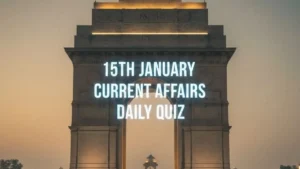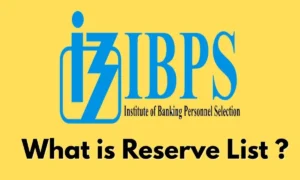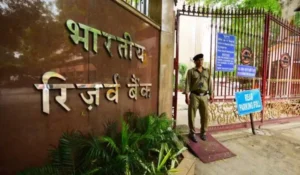Dear Aspirants,
Reasoning Ability is an onerous section. With the increasing complexity of questions, it becomes hard for one to give it a cold shoulder. The only way to make the grade in this particular section in the forthcoming SBI PO Prelims and other banking exams is to practice continuously with all your heart and soul. And, to let you practice with the best of latest pattern questions, here is the Adda247 Reasoning Quiz with the exact same pattern of questions that are being asked in the exams.
Directions (1-5): Study the information carefully answers the questions given below.
6 Friends are sitting in two triangles such as one triangle is placed inner side of another triangle. All persons are sitting on each corner of the two triangles. The persons who are sitting in inner triangle are facing the persons of the outer triangle. P sits second to the right of C who faces R. B does not face P. P and Q do not belong to same triangle. Q faces the person who is immediate right of C. A and B do not belong to the same triangle. A belongs to outer triangle.
Q1. What is the position of Q with respect to R?
(a) Immediate left
(b) Immediate right
(c) Second to the left
(d) Third to the right
(e) None of these.
Q2. Who among the following sits in front of C?
(a) P
(b) Q
(c) R
(d) A
(e) None of these.
Q3. Who among the following sits second to the left of B?
(a) P
(b) Q
(c) A
(d) D
(e) None of these.
Q4. What is position of the person who sits in front of the person who is immediate right of R?
(a) Immediate left of B
(b) Immediate right of C
(c) Second to the left of C
(d) Second to the right of B
(e) None of these
Q5. Which of the following is false regarding the statement?
(a) A is immediate neighbour of Q
(b) B is in front of Q
(c) C sits in inner triangle
(d) P faces R
(e) None of these.
Direction (6-10): In this question, two/three statements followed by two conclusions numbered I and II have been given. You have to take the given statements to be true even if they seem to be at variance from commonly known facts and then decide which of the given conclusions logically follows from the given statements disregarding commonly known facts.
Q6. Statements:
All calls are mails.
Some mails are posts.
Some posts are letters.
Conclusions:
I. All posts being calls is a possibility.
II. No letter is a mail.
(a) Both the conclusion I and conclusion II follow
(b) Either conclusion I or conclusion II follows
(c) Neither conclusion I nor conclusion II follows
(d) Only conclusion I follows
(e) Only conclusion II follows
Q7. Statements:
All calls are mails.
Some mails are posts.
Some posts are letters.
Conclusions:
I. All mails are calls.
II. No call is a letter.
(a) Both the conclusion I and conclusion II follow
(b) Either conclusion I or conclusion II follows
(c) Neither conclusion I nor conclusion II follows
(d) Only conclusion I follows
(e) Only conclusion II follows
Q8. Statements:
Some vehicle are cars.
Some cars are truck.
All truck are sedans.
Conclusions:
I. All vehicles being sedans is a possibility.
II. At least some cars are sedans.
(a) Both the conclusion I and conclusion II follow
(b) Either conclusion I or conclusion II follows
(c) Neither conclusion I nor conclusion II follows
(d) Only conclusion I follows
(e) Only conclusion II follows
Q9. Statements:
Some bridge are road.
No road is underpass.
Conclusions:
I. Some bridges are underpasses.
II. No bridge is an underpass.
(a) Both the conclusion I and conclusion II follow
(b) Either conclusion I or conclusion II follows
(c) Neither conclusion I nor conclusion II follows
(d) Only conclusion I follows
(e) Only conclusion II follows
Q10. Statements:
No unit is a part.
All part are item.
Some item are elements.
Conclusions:
I. No unit is an element.
II. At least some units are items.
(a) Both the conclusion I and conclusion II follow
(b) Either conclusion I or conclusion II follows
(c) Neither conclusion I nor conclusion II follows
(d) Only conclusion I follows
(e) Only conclusion II follows
Directions (11-15): In each question, a relationship between different elements is shown in the statements. The statements are followed by two conclusions. Study the conclusion for the given statement and select the appropriate answer.
Q11. Statements: P
Conclusions: I. L≤E II. P
(a) Only conclusion I is true.
(b) Only conclusion II is true.
(c) Neither conclusion I nor II is true.
(d) Both conclusion I and II are true.
(e) Either conclusion I or II is true.
Q12. Statements: P≤U=N≤C≥H>S; K≥C
Conclusions: I. P≤C II. U>H
(a) Only conclusion II is true.
(b) Only conclusion I is true.
(c) Both conclusion I and II are true.
(d) Neither conclusion I nor II is true.
(e) Either conclusion I or II is true.
Q13. Statements: P
Conclusions: I. Q≥D II. A
(a) Both conclusion I and II are true.
(b) Either conclusion I or II is true.
(c) Only conclusion II is true.
(d) Only conclusion I is true.
(e) Neither conclusion I nor II is true.
Q14. Statement: D≥I>S≥M≤A
Conclusions: I. D≥A II. L>I
(a) Only conclusion I is true.
(b) Either conclusion I or II is true.
(c) Only conclusion II is true.
(d) Neither conclusion I nor II is true.
(e) Both conclusion I and II are true.
Q15. Statements: P≤U=N≤C≥H; K≥C
Conclusions: I. K>U II. U = K
(a) Both conclusion I and II are true.
(b) Either conclusion I or II is true.
(c) Only conclusion II is true.
(d) Only conclusion I is true.
(e) Neither conclusion I nor II is true.






 Daily Current Affairs Quiz 15th January,...
Daily Current Affairs Quiz 15th January,...
 What is Reserve List and Provisional All...
What is Reserve List and Provisional All...
 RBI Office Attendant Recruitment 2026 No...
RBI Office Attendant Recruitment 2026 No...








